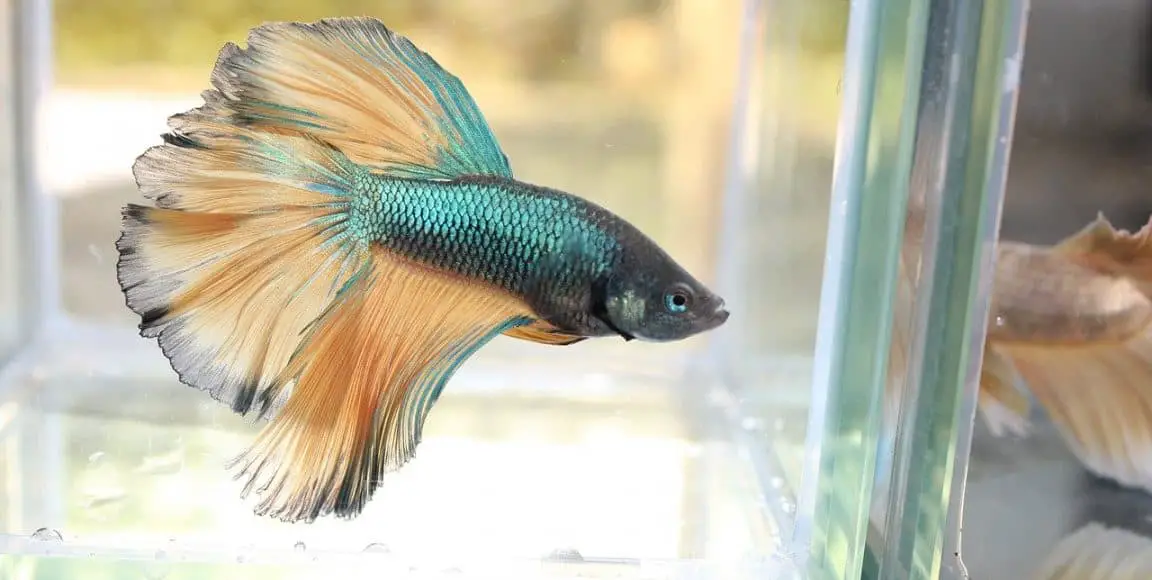Last Updated on October 5, 2020
Before answering the question, “can I add warm water to a fish tank?” let’s talk about betta fish and learn more about it.
Betta Splendens commonly known as the Betta originated from the tropical country of Thailand. It’s known before as Siam hence they also call betta fish as the Siamese fighting fish. Knowing that the Betta prefers a temperature of the tropical range is important.
You may be new to this hobby and got a Betta as a first pet fish or perhaps you are a seasoned aquarist with multiple aquascaping projects. It is most possible that you already thought of adding warm water to betta fish tanks to keep the temperature in the desired range.
Just like having a pet dog, kitten, reptile, or other fish, we would want to strive to give the creatures we care for the best life they can have free from injury and disease. Just like any animal, your Betta fish has certain needs for it to thrive and be happy. One of the most important needs is keeping the betta fish’s water stable within the optimal range.
How warm should a fish tank be?

You can classify aquarium fish based on the temperature of their preferred habitat. Coldwater fish are those that thrive in the water temperature range of 15-20 degrees Celsius or 59-68 degrees Fahrenheit. Tropical fish are those that require heated water between 24-27 degrees Celsius or 75-80 degrees Fahrenheit.
The optimal temperature Betta fish need is in a range of 25-27 degrees Celsius or 78-80 degrees Fahrenheit which puts them in the classification of Tropical Fish.
Temperature plays a major role in the life of your pet fish. If the temperature is warmer than their preferred range then this will speed up their metabolism and shorten their lifespan. If the temperature is lower than the optimal temperature range, then this will slow down their metabolism leading to susceptibility to disease and problems indigestion such as bloating and constipation.
Aside from affecting the fish, temperature also influences the oxygen content of the water. Warmer water will have less dissolved oxygen compared to cooler water. That is the reason agitation of the water surface is important to allow gas exchange.
Higher temperatures can also kill the beneficial bacteria in your fish tank. These beneficial bacteria also need oxygen to perform their role of detoxifying ammonia. A lower temperature will however prolong the cycling process of new fish tanks. So staying at the optimal range is best.
Related: How to Warm Up a Betta Tank Without a Heater?
How do you keep the water temperature in a fish tank?
In large bodies of water such as lakes, rivers, and oceans the water temperature is more stable. The large-scale movement of air also known as atmospheric circulation is the process by which it distributes the heat on the surface of the Earth. This keeps climate zones stable that is why fish in large bodies of water where they originate from do not experience sudden fluctuations in temperature. We should try our best to simulate this in our fish tanks to avoid sudden shifts in water temperature harmful to our pet fish.
The large bodies of water in the natural setting where fish come from also do not experience drastic temperature change because of the large amount of water. Fish can swim to other areas if ever they detect temperature fluctuations. Our fish tanks unfortunately do not give them this option.
Equip yourself with techniques or tools needed to maintain the right temperature. An accurate aquarium thermometer is necessary.
You can add warm water to a fish tank to keep it warm just in case the power goes out. This is a tricky process, and it is not for beginners. Note the amount of water you take out like when you are doing a partial water change. Then make sure you will dechlorinate the water you are putting into your fish tank and make sure it has a temperature that is the same as your fish tank water. A sudden change in temperature will cause temperature shock to your fish and plants.
It would be safer to float plastic water bottles containing dechlorinated and heated water. You can also float heat packs. Be sure there are no harmful chemicals such as soap on the things you put into the aquarium because this will harm your fish. This method will prevent a sudden shift in temperature.
Insulate the fish tank with a blanket after doing the mentioned techniques to preserve the heat while waiting for the power to come back. Avoid covering the entire opening of your tank to allow some air inside. Check the temperature every 3 to 4 hours. Repeat the process as needed.
Related: How to Decorate Fish Tank
Is it necessary to have a heater in a fish tank?
If you live in a country that has a tropical climate then a heater is unnecessary to have. There are times though that temperature drops real fast such as during the cold rainy season. It may help to have a heater kept as an emergency tool just in case this happens.
For hobbyists living in a country that experiences temperatures below the optimal range for your pet fish, it is best to have an aquarium heater. It is the easiest way to maintain the warmth of your fish tank’s water. The popular aquarium heaters available these days have a built-in thermostat which prevents the water from overheating and cooling.
Make sure that you purchase a heater that is suited for the volume of your betta fish’s tank. You can also consider setting up your fish tank in a room that doesn’t get too cold. The recommended wattage may not be enough if the room gets too cold.
An aquarium heater is convenient equipment used to keep the temperature within the optimal range for your fish. This will give you peace of mind that your pet is living in a safe home where it can thrive.
If you often ask yourself: “can I add warm water to a fish tank?”, then we hope we helped you find the answer.
